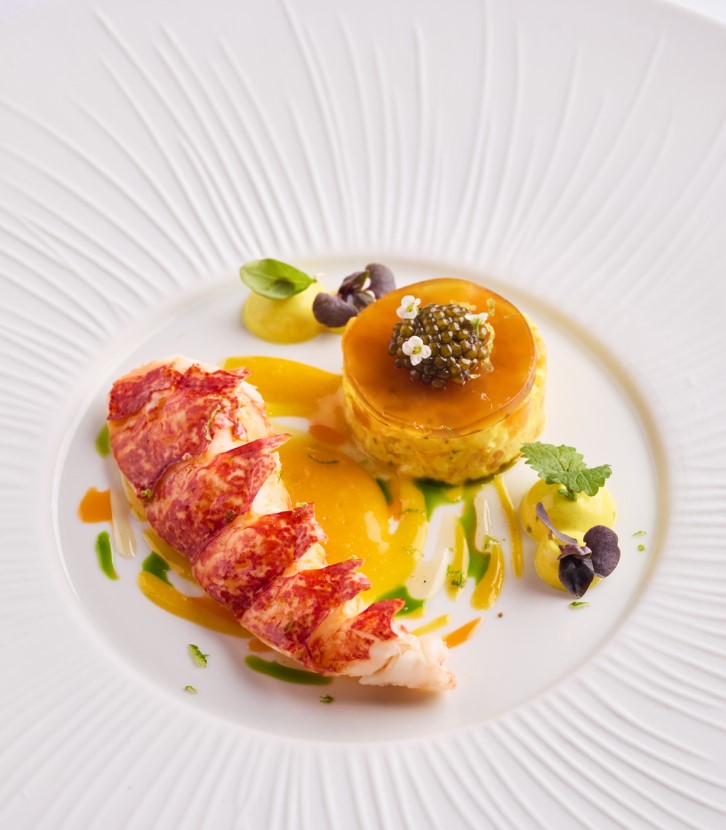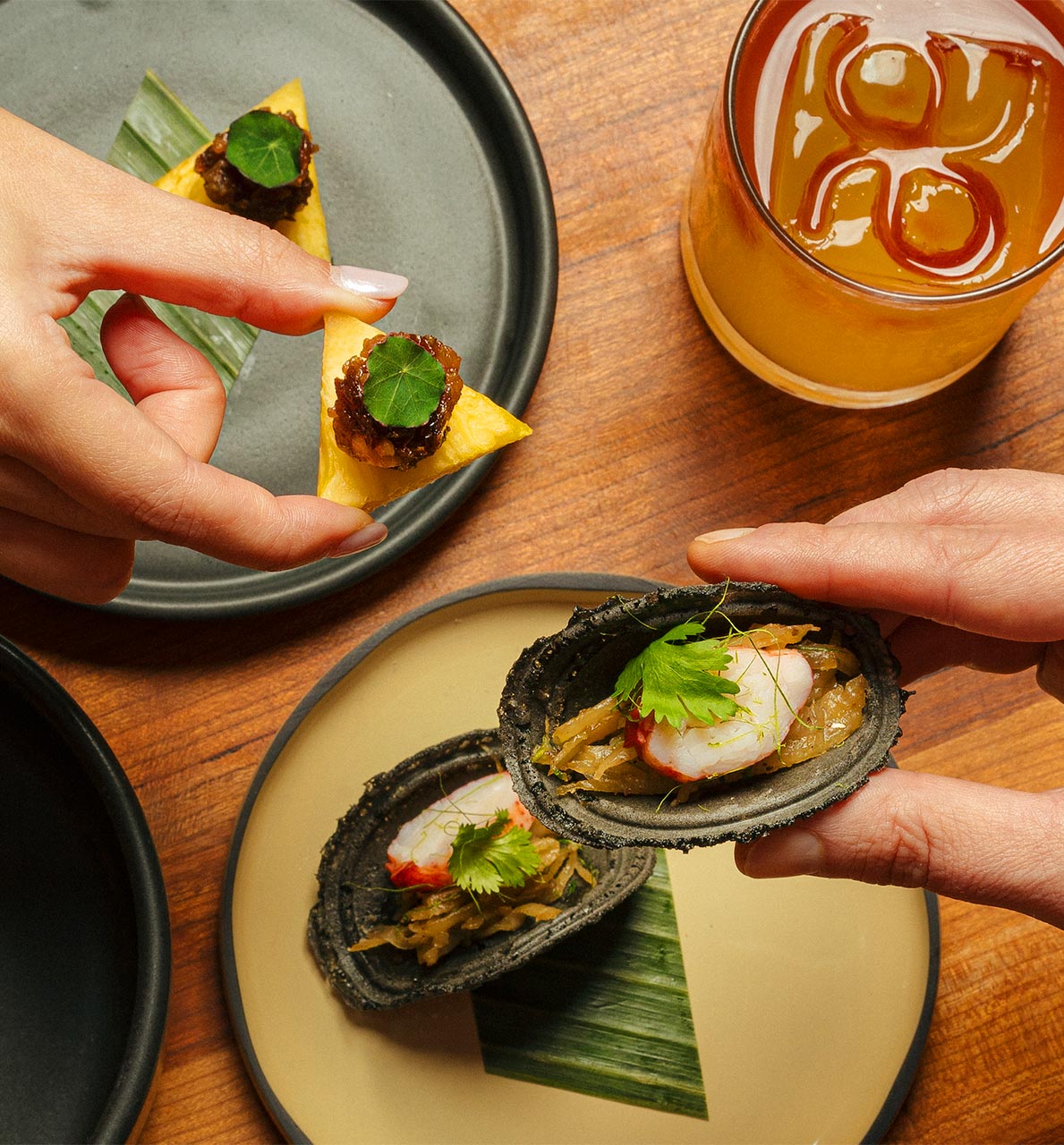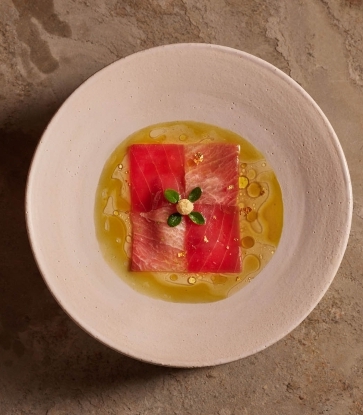Jason Gouzy's career began at Le Bristol in 2012. After finishing his education, he entered the industry and joined the team at the restaurant Epicure, led by Éric Fréchon. Here, Jason became well-versed in the technical rigour and characteristics of luxury hotel cuisine. "I learned how to be consistently excellent," he says. "I was also lucky enough to be able to work with produce like truffles and caviar and understand why they are used."
After a stint at Le Burgundy, the chef – who is from the Champagne region – set off on a radically different trajectory when he was recruited by Romain Tischenko's Le Galopin. "I liked it straight away because we were working with simpler, more natural produce," he recalls. It is this simplicity that would play a decisive role in shaping Jason Gouzy's culinary identity. After honing the dishes he had learnt in luxury hotels, one day a delivery problem meant Jason had to work with "what was at hand" only: carrots.

"I wanted to be a chef in my own restaurant!"
"That's when I had to think about how to prepare an ingredient in several ways," Jason explains. "I thought it was cool and started doing it with all seasonal produce. I used a single ingredient in every dish." This experience forged the chef's identity and enabled him to know what he wanted to do in his career.The next logical step was opening his own restaurant. In late 2019, he left Le Galopin to strike out on his own. "I wanted to be a chef in my own restaurant," he says. "You don't really start cooking until you're in your own place, I feel." With the support, financial and otherwise, of his in-laws, he opened Pantagruel in January 2020, but the timing was far from perfect. Strikes in France and the onset of the COVID-19 crisis made 2020 a difficult year for the restaurateur.

However, Jason Gouzy's talent did not escape the notice of The MICHELIN Guide Inspectors, who awarded Pantagruel a Star at the 2021 Ceremony. Sporting his Michelin-Starred chef's jacket, and with his restaurant always fully booked, the "totally liberated" chef has now gradually introduced what has become his trademark: three-plate servings. At each stage of the tasting menu, a main dish is flanked by its two satellite dishes, all three based on the same ingredients. "In all the fine dining restaurants I am familiar with, I've noticed that the chef's signature dish or favourite dish is almost always presented across three plates, and I've always found that to be a masterstroke," Jason suggests.

Drawing on his experience of showcasing a single ingredient per course, the chef creates a cuisine in which each ingredient is proven to be multi-faceted. "In fact, I think about it as if a dish were being interpreted in three different ways," he explains. "First, I always think about the main dish and the ingredients I want to work with, and then I ask myself how I can transform these same ingredients for the complementary dishes. In general, I try to have one element that's a bit experimental, one that's a bit classic/vintage and one that gives a boost."
Bridging Tradition and Innovation
For diners, this means an experience that is both delightful and intriguing. While juggling three dishes at a time may seem a perilous exercise, the perfectly handled interplay of textures and flavours allows the customer to discover the cooking at their own pace. And yet, for all its apparent innovation, Jason Gouzy's cuisine is respectful of time-honoured French culinary traditions."It may be something of a dirty word, but I like to say that I cook bourgeois cuisine – but popular bourgeois cuisine!" he says. "What I call 'bourgeois' is the appreciation of the ingredient, the chef's expertise, the desire to create something beautiful and surprising; the 'popular' side is that I am looking to provoke nostalgia in the diners, to trigger a memory. Not everyone has the same frame of reference, but when you manage to transport someone back in time with your cooking, you've hit the jackpot."

One of his signature dishes, the lobster croque-monsieur, is a fine example of this "popular bourgeois cuisine" concept – of which Christophe Pelé, Chef at Le Clarence, is one of the instigators. "To my mind, luxury ingredients are never as tasty as when you get to mess with them a little bit," Jason says. "It's like how during a meal, I want to have a white tablecloth on the table, but I want it to get dirty."
So, at the table, the courses follow one another in a whirlwind of panache and generosity that the chef strongly identifies himself with. "I'm a food lover first and then a chef," he says. "I love eating out as much as I love cooking." Ultimately, this is evident on every plate that leaves his kitchen: a genuine love of good food and of spending time around the table. This love is also passed on by the kitchen and front-of-house teams; just as the dishes complement each other, the success of Pantagruel is also down to a team effort, with everyone playing their part. In essence, Jason still has the central role, but it is the people around him who elevate the experience – just as in his trios of dishes, the main component cannot do without its supporting cast.

Jason's Recipe for Croq'homard
Ingredients for 6 croq'homards ● 12 large slices of sandwich bread
● 200g 35%-fat cream
● 300g egg white
● 100g butter
● 300g meat: white fish + lobster meat or poultry + lobster meat
● 150g lobster bisque
● 500g lobster claws
Method
● Mix the cream, egg whites, butter and meat; blend in a food processor.
● Add the bisque and lobster claws.
● Take a metal mould, place a slice of bread at the bottom, then a layer of mixture, then put a slice of bread on top.
● Encase within a suitable food wrap.
● Cook for 3 hours at 70°C.
● After cooking, cut into 1cm-thick slices.
● Brown the slices in butter in a frying pan.
● Serve hot with a little bisque.
All photos by Florian Domergue



















